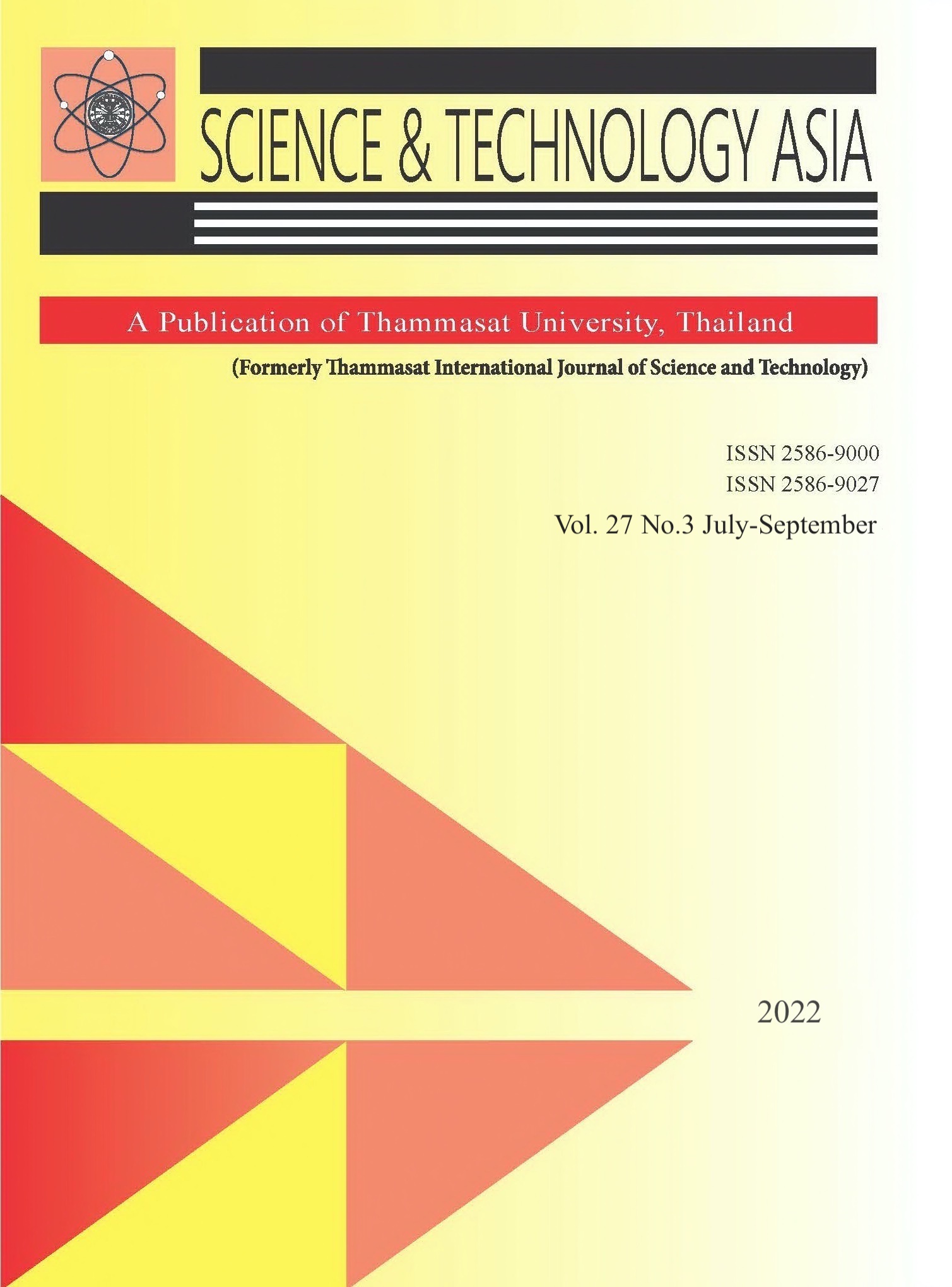Influence of MAP Recovered from Swine Wastewater as a Fertilizer Source on the Growth and Nutrition of Maize Plant
Main Article Content
บทคัดย่อ
Magnesium ammonium phosphate (MAP), also known as struvite, was recovered from swine wastewater and the feasibility of utilizing it as a slowly-releasing fertilizer was examined. Field trials were conducted to investigate the effects of MAP and NPK fertilizers on maize. A total of 5 treatments (Control: non-fertilizer, NPK: 140 kg N/ha - 80 kg P2O5/ha - 90 kg K2O/ha, MAP 1:50 kg N/ha, MAP 2:100 kg N/ha, MAP 3: 150 kg N/ha) were carried out. Maize growth, leaves number, leaf area, morphology, and quality of the corn were assessed at growing stages. The results showed that maximum height of maize (228.1 cm) was observed in the MAP 3 treatment at 50 days (the time at which cob formation begins), and there was a significant difference (0.01) between MAP 3 and control treatment. Besides, the tassel stage was a significant difference (
0.01) between MAP 3 (50.3 days) and other treatment. However, there was no significant difference (
0.01) in the number of leaves for the different treatments. On the other hand, the maximum leaf area at 50 days in NPK treatment (343.3 cm2 plant-1), the estimated leaf area was significantly different (
0.01) in MAP 1 (246.9 cm2 plant-1) and control treatments (264.7 cm2 plant-1). The morphology (length and diameter) and sweetness of the corn were not significantly different (
0.01) between MAP and NPK treatment. It could be suggested from the results that MAP would be an ecofriendly sustainable fertilizer source for maize production.
Article Details

อนุญาตภายใต้เงื่อนไข Creative Commons Attribution-NonCommercial-NoDerivatives 4.0 International License.


